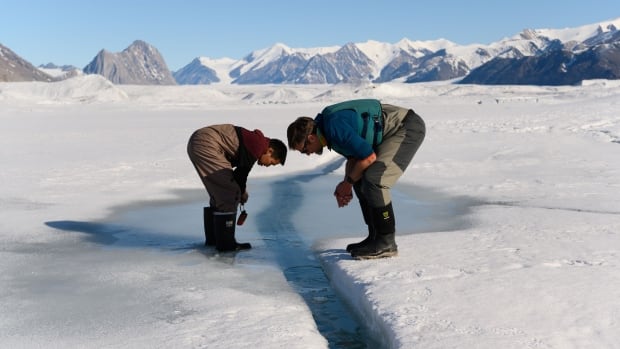[ad_1]
The Current12:57A crack in the ice, and a changing climate
On the Milne Fiord last summer, photojournalist Dustin Patar captured an image of two people peering into a deep crack in the ice, as they studied the impact of climate change on the Arctic.
“What they’re actually doing in that photo is looking to see if that crack goes all the way through into the water, below the ice,” said Patar, who took the image as a freelance journalist, but now works with CBC North.
“Beneath the surface, something else was happening that essentially says that this climate, this environment, this ecosystem is very limited in time,” he told The Current’s Matt Galloway.
The Milne Ice Shelf on northern Ellesmere Island collapsed in 2020. Considered to be Canada’s last fully intact ice shelf, it was almost 4,000 years old. Patar travelled to the Milne Fiord last summer, to document the work of scientists investigating the effects of the collapse.
After the Milne Ice Shelf on the northern coast of Ellesmere Island collapsed in 2020, a lake it was supporting disappeared. Scientists returned north this summer to try to understand what that could mean for the island’s glaciers.
That work, originally published in The Narwhal in Sept. 2022, won a Digital Publishing Award two weeks ago. This week, one particular image — showing an Ellesmere Island resident and a researcher peering into a large crack in the ice — won the inaugural CJF-Edward Burtynsky Award for Climate Photojournalism.
Here are some of Patar’s images from “the very top of the world.”





[ad_2]
Source link





